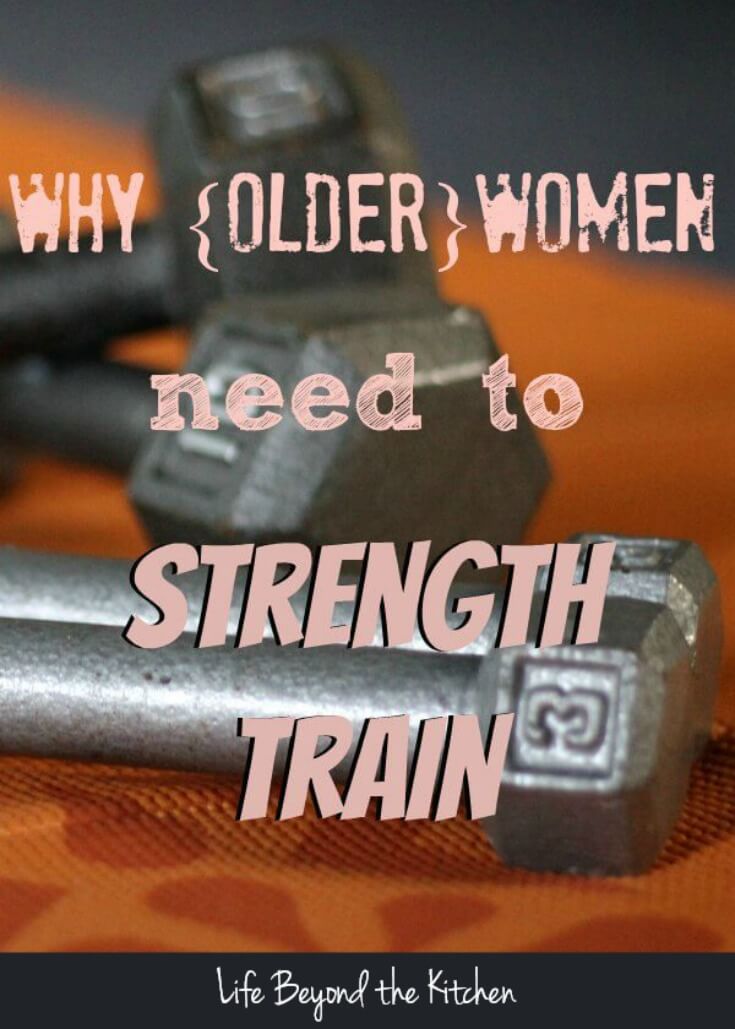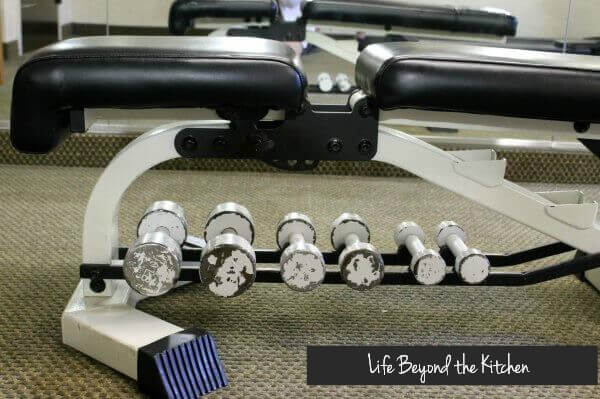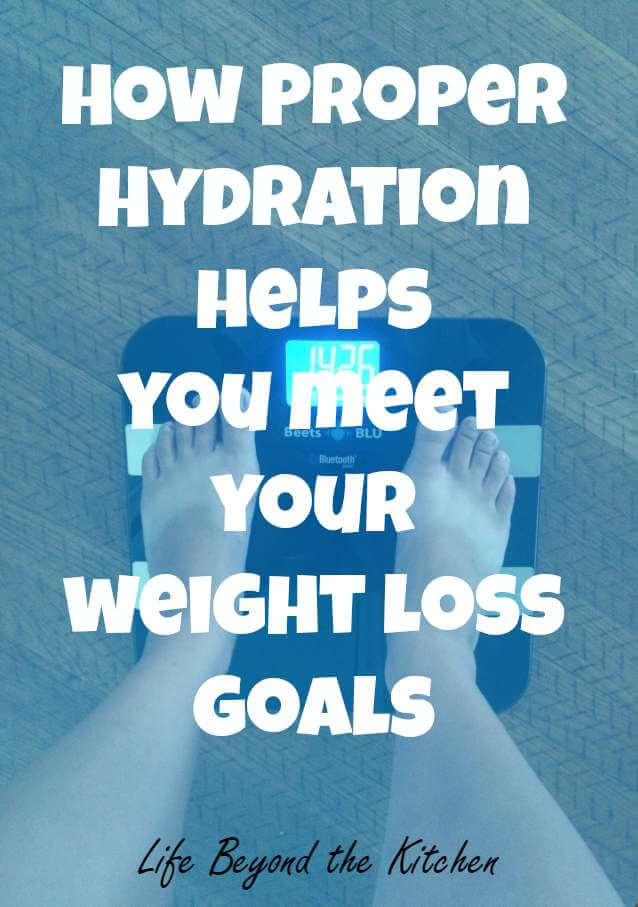Why {Older} Women Need to Strength Train
Last Updated on April 24, 2018 by lydiaf1963
This post was originally published on Lydia’s Flexitarian Kitchen. This seems like a good time to update and revisit it.
You may have experienced it already. The struggle to lift a couple bags of groceries or a gallon of milk to the counter. Or the need to grab a piece of furniture for support when rising from the floor. You don’t have to be a woman of a certain age to experience a loss in the strength necessary to perform everyday tasks, but it happens more frequently as we approach and enter menopause. With our sedentary lifestyle it’s easy to lose muscle tone and aging bodies lose muscle at a faster rate. It doesn’t seem fair, does it? You may be surprised to learn that strength training for older women is just as important to long term health as cardio exercise and diet.

Whether you do it or not, you probably already know you should try to fit in at least 30 minutes of cardio training such as walking, biking and swimming most days of the week. But while cardio is great for your heart and physical endurance, it doesn’t help make you strong. It’s never too late (or too early) to start strength training. Set your mind at ease, it takes specialized training for a woman to bulk up excessively. You may, however, find adding exercises designed to increase your strength will benefit you by:
Reducing Those Little Aches and Pains: whether from minor arthritis, depression or joint pain brought on by carrying too much weight on our frame. It seems counter intuitive, but moving the joints and strengthening the muscles around them can help reduce stiffness and pain.
Improving Balance: Weak muscles don’t support the joints as well as they might which may cause a wobble, and a weak core makes it difficult to correct an imbalance, increasing the risk of taking a bad fall. (Try this simple test: sit cross legged on the floor. Can you get all the way back to your feet without having to use your hands? Read this article to understand why this ability is important).
Strengthening the Bones: After menopause, it’s not uncommon for a woman to lose 1-2% of her bone mass every year. Strength training increases bone density and reduces the risk of fracture.

Strength training also aids in:
Weight management: Increased muscles means an increased metabolic rate which can help you lose fat weight around the clock. Reduced weight will also improve your risk of developing Type II diabetes, hypertension, sleep apnea, gastric reflux and heartburn and other “diseases of consumption.” Along with a proper diet you’ll look slimmer even if you don’t lose a pound because muscle occupies less space than the equivalent weight in fat. [The expression “muscle weighs more than fat” is incorrect. A pound of muscle weighs exactly the same as a pound of fat, but muscle has much less volume, so your clothes will fit better.]
Improved posture: As the muscles in your core and upper back strengthen you will be able hold yourself upright, which will reduce pain in your back, neck and hips caused by a slumped posture along with the added benefit of making you look slimmer.
Enhanced Sense of Well Being: Regular exercise of any type will help you sleep better and elevate your mood. It can act as a natural antidepressant in some people. In addition, regaining the ability to perform simple tasks without pain or fear of injury will boost self confidence by reducing dependency on others.

In general, older women who have a regular exercise regimen enjoy a greater quality of life and, if the activity is maintained, it’s possible to avoid many of the medical problems that plague the later years. One study in particular showed active seniors take fewer prescription medications and are less likely to be admitted to the hospital in an emergency.
Are you surprised to find out there are so many benefits to strength training for older women? I certainly was. Next, we’ll talk about getting started and explore some of the options…you can accomplish a lot without having any specialized equipment.






